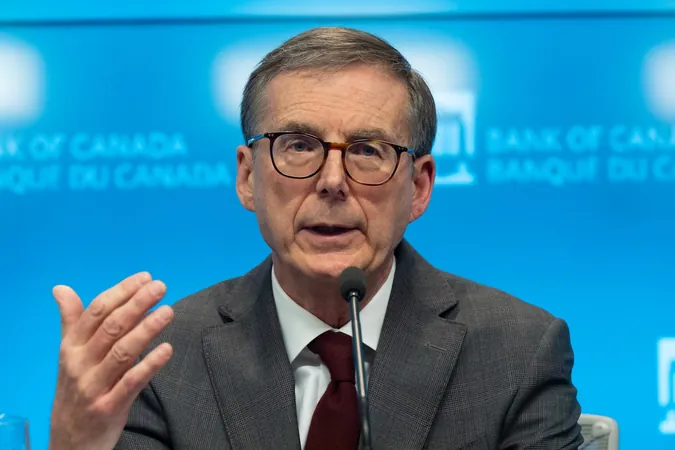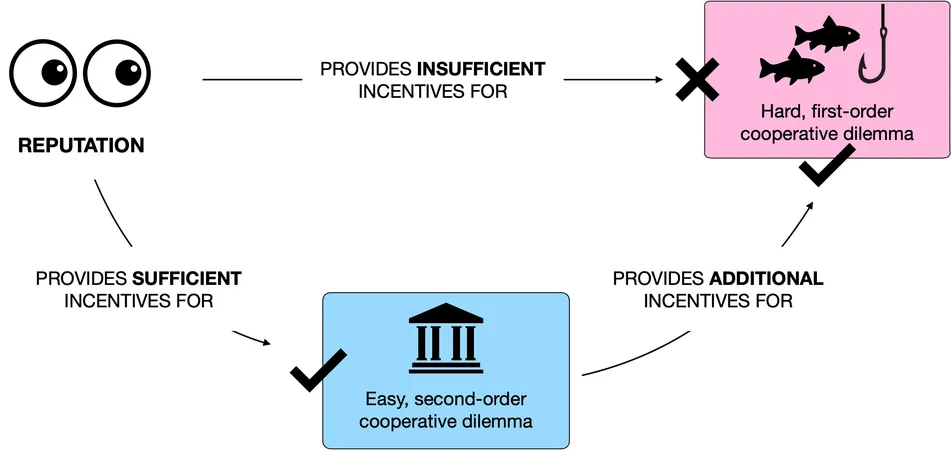
Is a 2% Inflation Target Still Viable? Bank of Canada to Reevaluate Its Strategy!
2024-12-16
Author: Olivia
Introduction
In a significant announcement, Bank of Canada Governor Tiff Macklem revealed that the bank will reassess its 2% inflation target during the upcoming mandate review, set to commence next year. This review is part of a five-year cycle where the central bank and the federal government establish monetary policy objectives, which the bank independently pursues.
The Importance of the Review
During a speech delivered to the Greater Vancouver Board of Trade, Macklem emphasized the importance of this review, noting that it will address several pressing questions in today's evolving economic landscape. He stated, "In a more volatile world, how do we identify and measure underlying inflation? Is 2% still the best target for the future? What’s the interaction between housing affordability and monetary policy?"
Historical Context
This isn't the first time the Bank of Canada has evaluated its inflation target. Previous assessments in 2011 and 2016 concluded that maintaining a 2% inflation target provided stability and flexibility, outweighing the potential gains from a different benchmark.
Current Economic Pressures
Macklem highlighted the numerous cost pressures businesses face due to fragmented supply chains, climate change, and other structural shifts in the economy, which could potentially lead to further increases in prices. He mentioned, “Some people are saying, ‘Well, maybe we should just raise the inflation target.’ I will admit I’m not convinced, but I do think we have to have an open mind.” This remark hints at the growing debate among economists and policymakers regarding whether the current target remains effective amidst ongoing economic challenges.
Recent Inflation Trends
The urgency of this reassessment follows a dramatic inflation surge that Canada experienced, with the annual Consumer Price Index skyrocketing to 8.1% in the summer of 2022 before returning to the target of 2% later in the year. Macklem expressed cautious optimism about this return but cautioned against potential economic shocks stemming from rising trade protectionism, an aging population, climate change, and the rapid development of artificial intelligence.
Interest Rate Adjustments
Addressing the critical issue of economic stability, Macklem referenced the recently implemented fifth consecutive interest rate cut, bringing the benchmark policy rate to 3.25%. He indicated that moving forward, the Bank will adopt a more gradual approach to monetary policy.
Lessons from the Pandemic
Moreover, lessons learned during the COVID-19 pandemic have profoundly impacted the Bank's outlook. Macklem asserted that monetary policy should increasingly focus on the supply side of the economy, emphasizing that sudden and persistent supply disruptions could compound inflationary pressures during times of high demand.
Exploring New Economic Models
Additionally, the Bank is exploring new economic models to better understand business price-setting behaviors based on varying economic conditions—a move aimed at refining its predictive capabilities. This progression includes leveraging data and simulations to anticipate alternative economic scenarios, vital for navigating an uncertain future.
Controversy of Unconventional Monetary Policies
While unconventional monetary policies, such as quantitative easing, proved effective in addressing the rapid economic fallout during the pandemic, they also stirred controversy as inflation surged in 2021. Macklem underscored the necessity of clarity around these extraordinary measures, stating, “The actions we took were truly extraordinary… the bar to use exceptional tools has always been high in Canada—and it should remain high.”
Conclusion and Future Implications
As the Bank of Canada prepares for the upcoming mandate review, all eyes will be on how it addresses these crucial questions and whether it will maintain its 2% inflation target in an increasingly complex global economy. The implications of this decision could shape Canadian economic policy for years to come! Stay tuned for updates on this developing story!









 Brasil (PT)
Brasil (PT)
 Canada (EN)
Canada (EN)
 Chile (ES)
Chile (ES)
 España (ES)
España (ES)
 France (FR)
France (FR)
 Hong Kong (EN)
Hong Kong (EN)
 Italia (IT)
Italia (IT)
 日本 (JA)
日本 (JA)
 Magyarország (HU)
Magyarország (HU)
 Norge (NO)
Norge (NO)
 Polska (PL)
Polska (PL)
 Schweiz (DE)
Schweiz (DE)
 Singapore (EN)
Singapore (EN)
 Sverige (SV)
Sverige (SV)
 Suomi (FI)
Suomi (FI)
 Türkiye (TR)
Türkiye (TR)